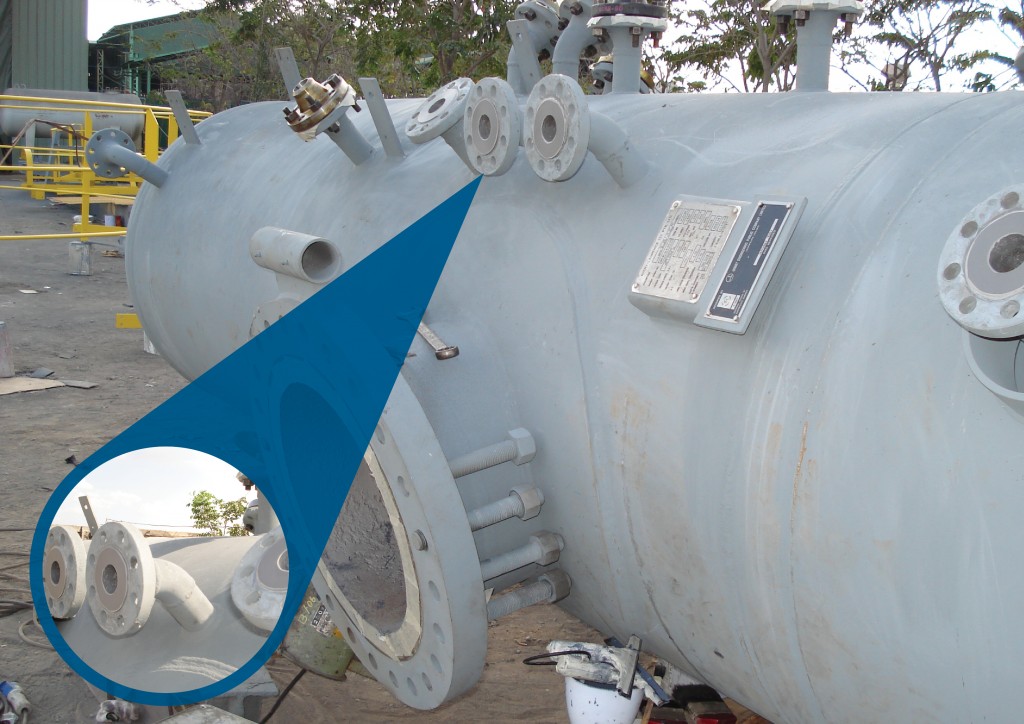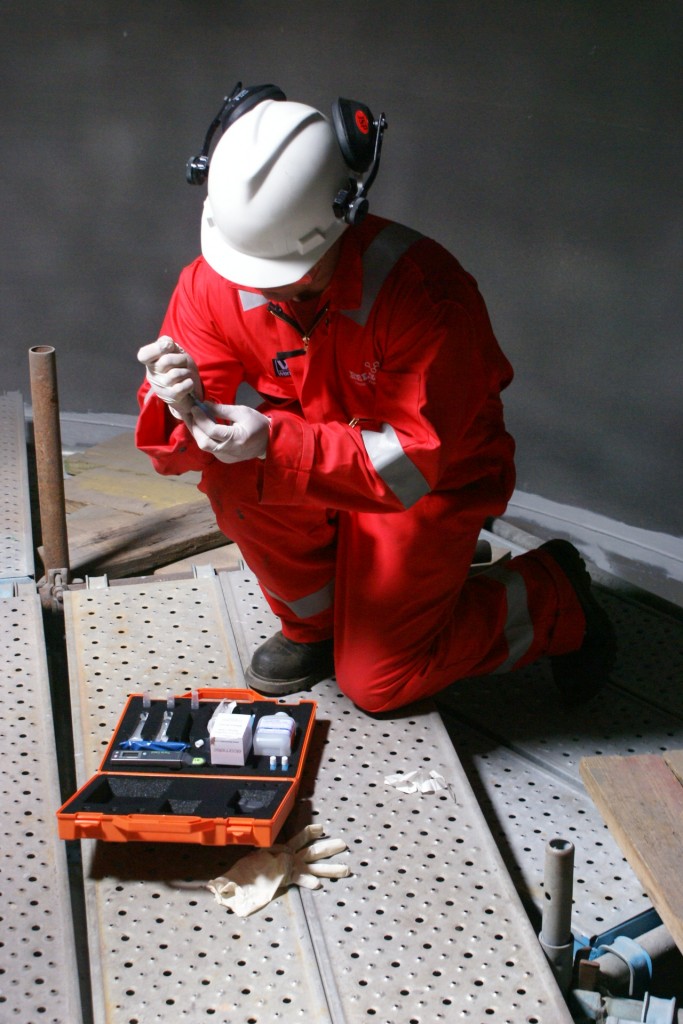Manufacturers within the protective coatings and linings industry recognise that an unacceptably high percentage of the projects, to which we supply our products, fail prematurely. Generally, the industry is fully aware and agrees that the primary reason for this depressing statistic is that many of these applications are carried out under less than ideal conditions. Often they are suffering from inadequate/incorrect preparation and application respectively.
Most protective coatings and linings manufacturers would agree that it is becoming increasingly unlikely that these failures can be attributed to ‘bad’ product. Due, in part, to the vast experience gained in product formulation, coupled with the extensive product performance data gathered, it would appear that these failures can be attributed to one thing – the application.
Teamwork begins with testing
Conscientious manufacturers subject their products to rigorous testing protocols before they even think about releasing them to industry and once this test regime is completed, most would then release the products for field trials. This first step ensures that, as far as possible, laboratory testing is corroborated by performance testing on real world equipment. Only then, would a new product be released for sale within the relevant market sector. However, in the interests of impartiality, there are many examples in industry where these protocols have not been adhered to, for one reason or another. In cases of this nature, the product in question has been swiftly withdrawn from sale until the problem has been eliminated.
Further to this, many potential clients have developed their own inventory of stringent “product acceptance test criteria”, which must be passed if products are to be included within the client’s “Coatings and Linings Specifications”. This document details where and when commercially available products can be used.
Taking all of this into consideration, it is fair to assume that the cause of a premature in-service failure, of modern protective coatings, is unlikely to be a product problem. As already agreed by most, it is more likely to be associated with the application method of that product, or a correct application procedure carried out under less than ideal conditions.
For most within the industry, this conclusion is not a revelation. In fact, it is a cause which has been championed by numerous scholarly and technical bodies for many years now; NACE, SSPC, ISO, ASTM, to name but a few. All of these institutions continue to work tirelessly in promoting the principle that the correct application of any coating or lining is fundamental to ensuring an acceptable and economical system service life.
Yet the risks still remain. So what needs to be done to minimise the risk of premature coating failure and maximise the performance life of the applied coating? The answer to this question is not an easy one – if it were then it would probably have already happened!
Maximising lifetime and minimising risk
In order to achieve the ultimate goal of minimal risk and maximum life for any coating project, several factors need to be taken into account and all of them must work in synergy for the desired outcome to be realised. The main factors which can have an adverse effect on the quality and longevity of any coating project are, in the author’s opinion, as follows:
- Equipment design
- Application environment
- Application contractor experience
- Client expectations and misconceptions
- Coating characteristics
Within the first part of this post, we will explore the implications of equipment design in relation to their repair and protection, before examining the application environment in further detail.
Equipment design
Until recently, the experience of most industry professionals was that process vessel designers did not automatically accept that the equipment they design may need to have a protective coating. This includes either internal linings or external coatings applied from new or at some stage during its operational life. Indeed, opinions may even indicate that since most Design Engineer training has its roots firmly embedded in metallurgy, some would dismiss the use of internal linings from the outset. Instead, they would prefer ever more complex corrosion and erosion resistant metal alloys and alloy overlays. Fortunately, due to availability and economy constraints, alongside in-service experience, this trend is now beginning to decline.
Occasionally, manufacturers, and more importantly the lining applicator, can be confronted with a process vessel that just was not designed with lining application in mind, highlighted by the examples below:
- Baffle plates too close together
- Sumps that are too deep for an applicator’s arm to reach
- Welded internal furniture, making access to sections of the vessel pretty much impossible
- Small bore nozzles and nozzles that twist and turn in a multitude of directions
The list goes on. However, clients are now beginning to realise that organic linings are, if correctly installed, a viable alternative option to expensive exotic alloys. In fact, they are beginning to instruct design houses, up front, that a lining will be considered as an option for corrosion protection and that any design should take this into consideration. This message indicates that the use of an organic lining solution must become an integral part of the vessel design and delivery, requiring its own dedicated management and maintenance regimes. Any hope of making this corrosion management solution a successful and economically viable part of the equipment’s life cycle costs is dependent upon this message.
Despite many asset owners and operators beginning to understand the concept, coatings and linings manufacturers must still impress that successful application and operation of any lining begins with equipment design.
Application environment
Although the mechanisms of environmental cause and effect are fully understood, they still need to be correctly applied in order to maximise the service life of the coating or lining. It is now generally understood and accepted that the environment prevailing during any application will have an effect upon the outcome of that application. Therefore, the responsibility for applying the correct environmental controls is usually allocated to the Coatings Inspector; in fact most projects would utilise the services of at least one fully qualified professional.
Coating Inspectors are qualified and certified by the industry, for the industry and are in essence Quality Control Technicians. Unfortunately, if you ask clients, project managers or contractors what the role of the Coating Inspector is, you would be surprised at the many and varied answers you are given. Many clients assume that if there is a Coating Inspector on site, then all will be well and if it is not, then he must be responsible. Contractors generally look upon the Inspector with suspicion and distrust, convinced he is there to make them do more than is actually required and losing them their profits in the process.
In reality, the responsibilities of the Coating Inspector are to ensure that, under prevailing circumstances, the application is carried out in accordance with a written and agreed specification document. It is their responsibility to carry out specific testing in agreement with a QCP (quality control plan), in order to verify that the conditions itemised within the coating specification have been observed as far as possible. At the very minimum, they are there to observe, measure, document, and report; overall, a good Inspector will accomplish this in a completely unbiased fashion.
The Coating Inspector is a necessary requirement in order to minimise risk as much as is practically and economically possible. It is generally agreed that the Coating Inspector is a vital cog in the coatings application machine, without which the chances of success are less than optimum. However this latter statement, of course, assumes that the specification, often written by the client, is adequate for the application in hand and is not merely generic in nature. It also assumes that the application contractor can actually undertake the work in accordance with it.
Unfortunately, many coatings and linings specifications do not take into account the specifics of the application in hand, or in fact the environment in which the application is to be undertaken. Many are written without any knowledge at all of the application location, the product requirements or the application situation, and this is where conflicts begin to occur. Contractors’ price for applications based upon the specification, before realising that they cannot deliver what is required due to the constraints of the application location. Coating Inspectors applying the letter of the specification then come into conflict with the contractor who cannot comply because what they are now being asked to achieve was not included in their original quotation for the work.
This scenario happens all too often during the lining application phase of a project and with a small amount of cooperation, any application risks can be minimised by organising a ‘Pre-Start Meeting’. By involving all parties, the specification and subsequent changes can be agreed, dependent upon the prevailing environmental conditions and location of the work site. Additionally, each party can be informed via ‘Pre-Start Meeting’ minutes of their agreed individual roles, authority and responsibilities.
Continue reading with ‘Teamwork in the Coatings Industry – Part 2’
Henry Smith
Senior Technical Service Engineer
Belzona Polymerics Ltd







Thanks for sharing this informative blog it is really very useful and I could learn some new concepts on coating industries.